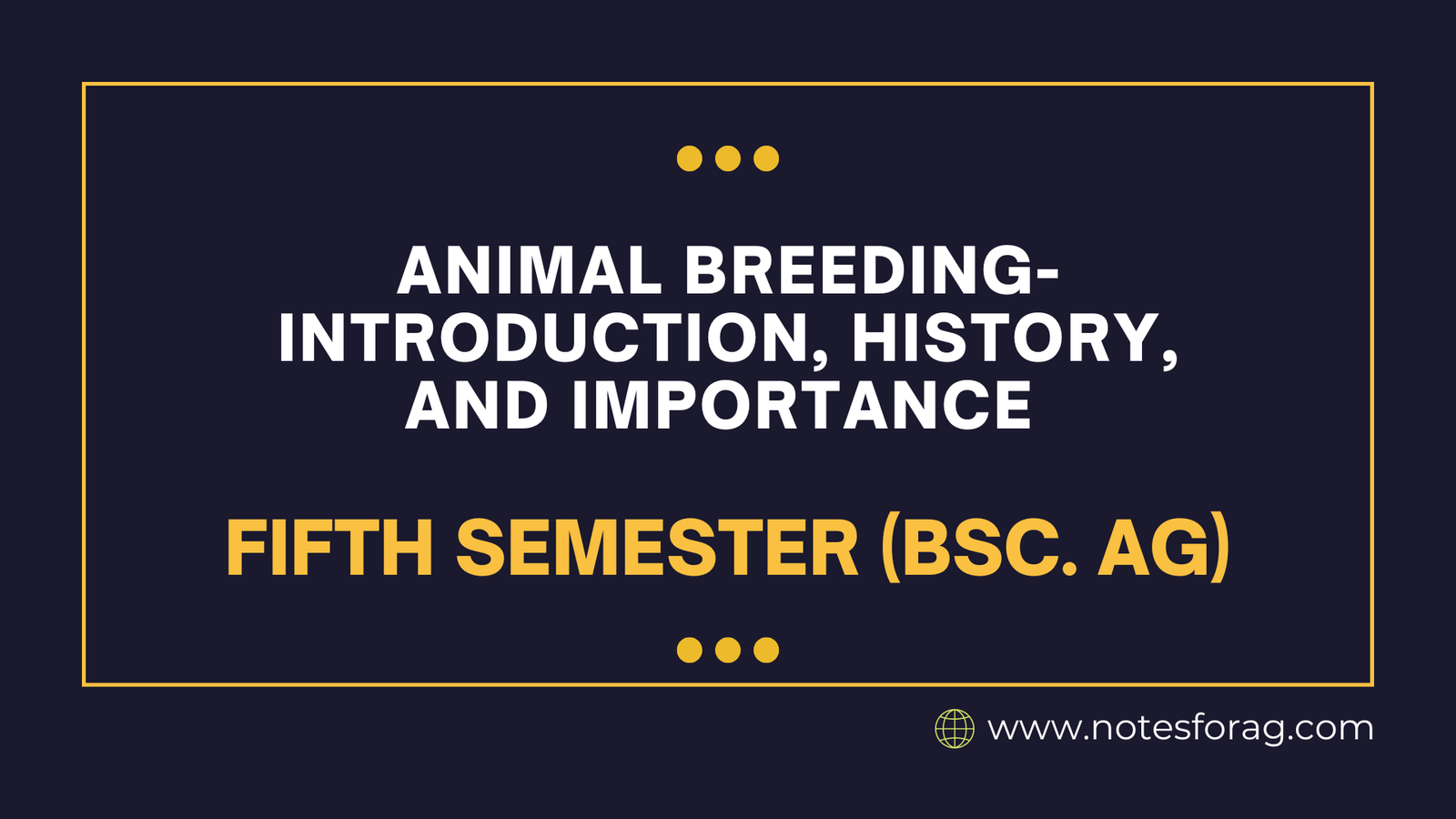Animal breeding is the scientific process of selecting and mating animals to promote specific characteristics like productivity, illness resistance, or adaptability. It dates back to early agrarian communities and was institutionalized in the 18th century through controlled breeding procedures. Advances in genetics and biotechnology have since transformed the industry, allowing more precise genetic improvements. Animal breeding is important because of its capacity to increase food output, improve animal health, support economic growth, and adapt livestock to changing environmental conditions, all while preserving genetic diversity for long-term sustainability.
Table of Contents
Introduction to Animal Breeding
Animal breeding is a scientific method in which animals are selectively mated to generate offspring with specific desirable qualities. This technique is critical for increasing cattle output, improving product quality, and assuring breed sustainability. Animal breeding in agriculture seeks to create animals that are more resilient, productive, and adaptable to their surroundings. Farmers can use selective breeding to create breeds with desirable features such as greater milk yield in cows, increased growth rates in meat-producing animals, and improved wool quality in sheep.
Furthermore, it is important not only in agricultural settings, but also for wildlife conservation. Conservationists can assist endangered species maintain genetic diversity by carefully regulating breeding programs, ensuring their survival in increasingly demanding conditions. This element emphasizes the delicate balance between human intervention and natural selection, as well as the relevance of genetically varied populations to ecosystem health.
History of Animal Breeding
1. Ancient practices:
- Since prehistoric times, humans have tamed animals and employed selective breeding to increase output.
- Early agricultural communities prioritized qualities that improved survival, such as physical strength, illness resistance, and adaptability to local conditions.
2. 18th and 19th Century:
- The systematic study of breeding began at this time, particularly with the work of Robert Bakewell, an English agriculturist who is regarded as the father of modern animal breeding.
- Bakewell pioneered the method of controlled breeding and selecting livestock for certain attributes, such as higher meat quality in sheep.
3. 20th Century and Beyond:
- Advances in genetics, notably Mendelian inheritance and, subsequently, the discovery of DNA, transformed animal breeding.
- Artificial insemination (AI), embryo transfer, and the creation of genetic markers have enabled considerable increases in livestock output and disease resistance.
4. Modern Genetic Engineering:
- With the advent of biotechnology, new techniques such as genome editing (CRISPR), cloning, and gene editing enable precise alterations to an animal’s genetic code, promising speedier and more targeted breeding improvements.
Importance of Animal Breeding
- Enhanced Productivity: Breeding programs boost milk yield, meat production, egg laying capacity, wool quality, and other factors that are critical to meeting the expanding demand for animal products.
- Disease Resistance: Breeders can reduce antibiotic use and improve animal welfare by selecting animals that are genetically resistant to specific diseases.
- Adaptation to Environmental Change: Breeding programs assist animals adapt to changing climates by making them more resistant to heat stress, drought, and cold temperatures.
- Economic Benefits: Improved breeds boost farmers’ profits by producing more efficient animals with higher yields.
- Preservation of genetic diversity: While breeding focuses on increasing certain features, it is also critical to preserve genetic diversity in order to ensure the long-term viability of animal populations and prevent inbreeding.
- Sustainable and efficient: Efficient breeds can lessen the environmental effect of livestock farming by using less feed and producing less waste, so making animal production more sustainable.
Animal breeding is an important field that not only serves to enhance food production, but also ensures that animals are healthier, more productive, and more suited to the demands of contemporary agriculture. With the advancement of genetic engineering, the future of animal breeding is likely to include increasingly more complex approaches, allowing for faster advances and the possibility to solve global concerns such as climate change, food security, and animal welfare.
Frequently Asked Questions
What is animal breeding?
Animal breeding is the process of selecting animals with desirable traits and mating them to produce offspring with improved characteristics. Its goal is to improve qualities including growth rate, milk output, disease resistance, and more.
Who is considered the father of modern animal breeding?
Robert Bakewell, an English agriculturist from the 18th century, is regarded as the father of modern animal breeding. He pioneered controlled breeding procedures and concentrated on selecting animals for certain characteristics such as meat quality.
Related Articles

